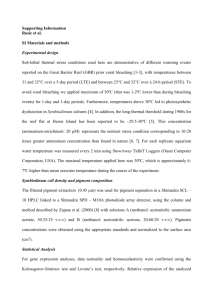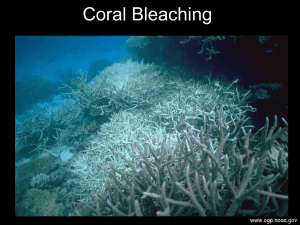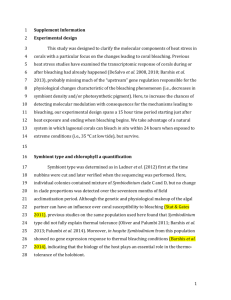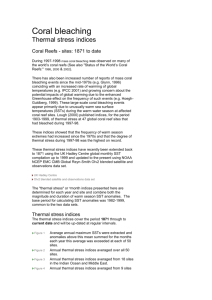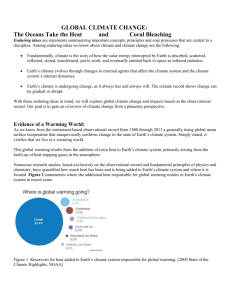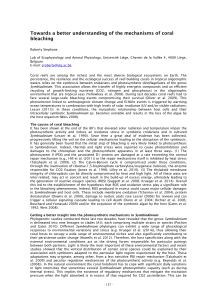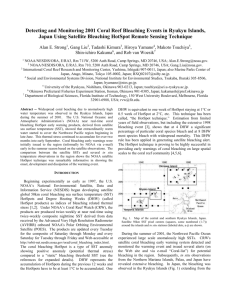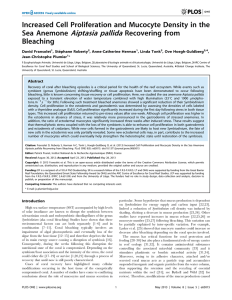Molecular mechanisms underlying coral mortality or survival
advertisement
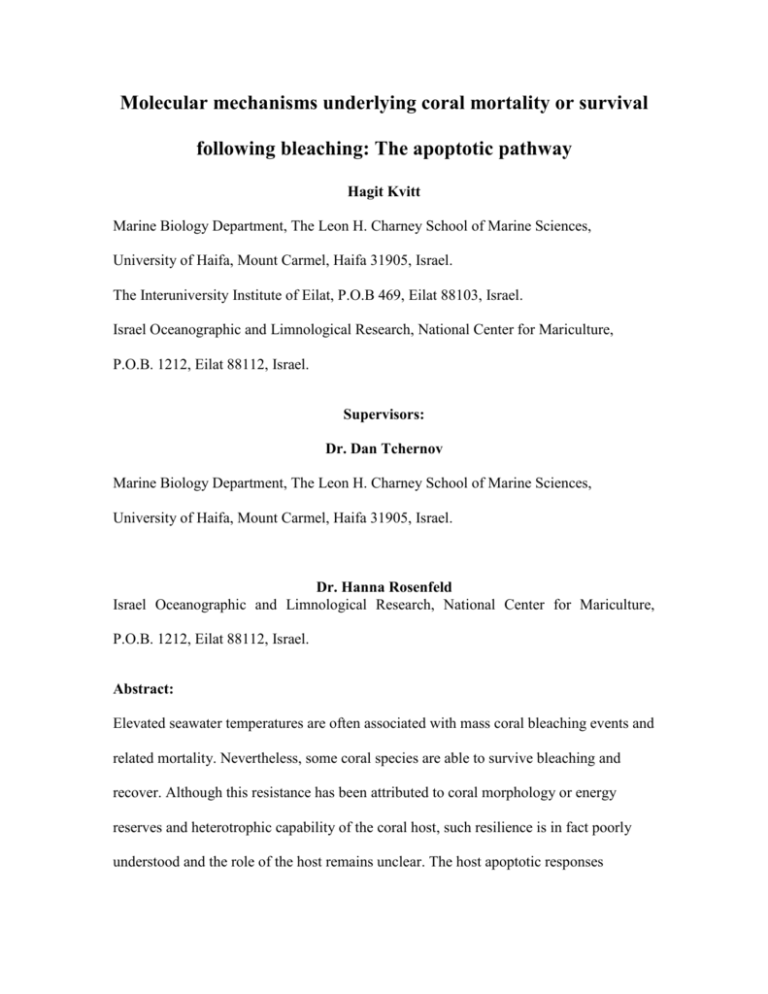
Molecular mechanisms underlying coral mortality or survival following bleaching: The apoptotic pathway Hagit Kvitt Marine Biology Department, The Leon H. Charney School of Marine Sciences, University of Haifa, Mount Carmel, Haifa 31905, Israel. The Interuniversity Institute of Eilat, P.O.B 469, Eilat 88103, Israel. Israel Oceanographic and Limnological Research, National Center for Mariculture, P.O.B. 1212, Eilat 88112, Israel. Supervisors: Dr. Dan Tchernov Marine Biology Department, The Leon H. Charney School of Marine Sciences, University of Haifa, Mount Carmel, Haifa 31905, Israel. Dr. Hanna Rosenfeld Israel Oceanographic and Limnological Research, National Center for Mariculture, P.O.B. 1212, Eilat 88112, Israel. Abstract: Elevated seawater temperatures are often associated with mass coral bleaching events and related mortality. Nevertheless, some coral species are able to survive bleaching and recover. Although this resistance has been attributed to coral morphology or energy reserves and heterotrophic capability of the coral host, such resilience is in fact poorly understood and the role of the host remains unclear. The host apoptotic responses associated to this ability (to survive bleaching and recover) were studied over 3 years in the reef building coral Stylophora pistillata from the Gulf of Eilat subjected to long term thermal stress. Such responses include caspase activity and the expression patterns of the S. pistillata caspase and Bcl-2 homologous genes (StyCasp and StyBcl-2-like) cloned in this study. In corals exposed to thermal stress (32 or 34 ºC), caspase activity and the expression levels of the StyBcl-2-like gene increased over time (6-48 h) and declined to basal levels within 72 h of thermal stress. Distinct transcript levels were obtained for the StyCasp gene, with stimulated expression from 6 to 48 h of 34 ºC thermal stress, coinciding with the onset of bleaching. Increased cell death was detected in situ only between 6 to 48 h of stress and was limited to the gastroderm. The bleached corals survived up to one month at 32 ºC, and acquired back symbionts when placed at ambient temperature (25 ºC). The importance of the advance: A growing body of evidence indicates that apoptosis is one of the prominent coral's responses to thermal stress, which is dependent on the extent and duration of the stress. However, information regarding the coral host responses is fragmentary. In this regard, our 3 year study with S. pistillata, characterizes for the first time, cellular and molecular responses in corals resilient to long-term thermal stress. The results demonstrate consistent temporal patterns, from which a two stage model could be inferred. The first stage involves the onset of apoptosis, mainly in the gastrodermal cell layer, accompanied by rapid activation of anti-oxidant/anti-apoptotic mediators that block the progression of apoptosis to other cells. The second stage involves the acclimatization of the coral to the chronic thermal stress alongside with complete symbiosis breakdown (bleaching). Hence, while bleaching contributes to free the host of suboptimal /harmful symbionts, the ability to rapidly restrain apoptosis emerges as most important trait attributing to coral's thermotolerance and survival. Our proposed mechanism becomes more and more relevant in light of sea surface temperature rise due to global warming, and is expected to stimulate further studies aiming to unravel the genetic nature of this phenomenon.
